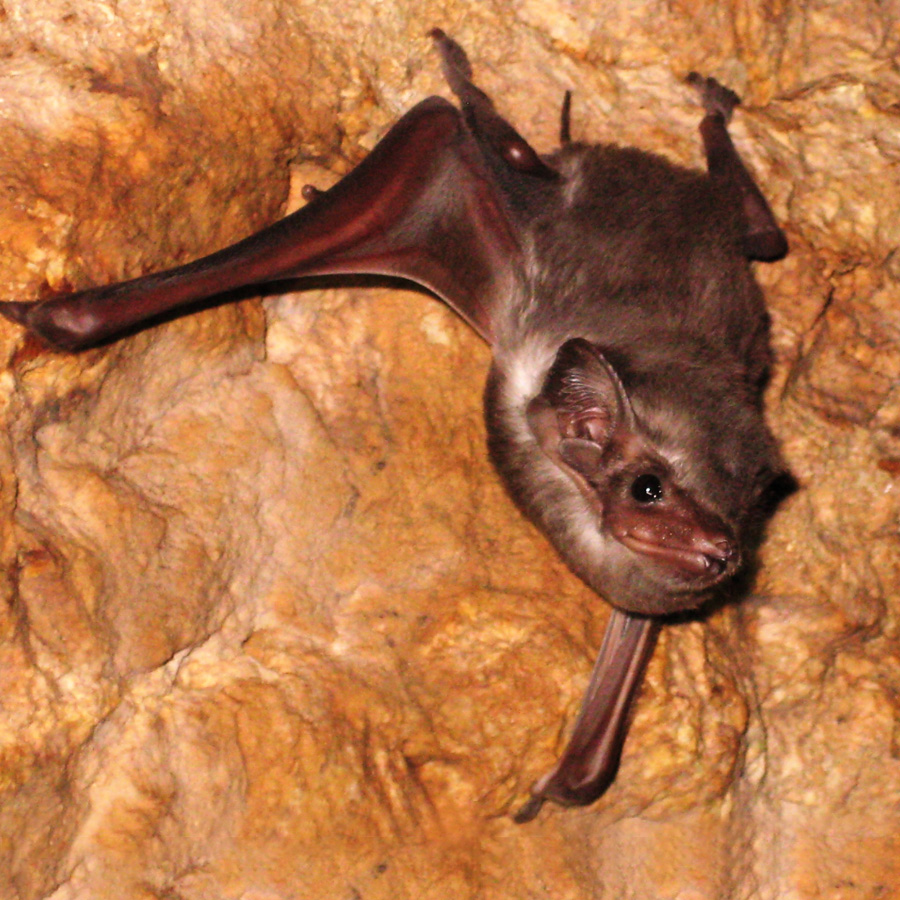Coastal Sheathtail-Bat
Taphozous australis
Conservation Status:
Queensland State: Vulnerable
Species and status overview
Occupying sea caves, boulder piles, rock fissures and buildings (usually within a few metres of high tide), the Coastal sheathtail-bat is thought to be threatened by habitat alteration particularly from coastal development. Roost site disturbance from human visitation is also a known threat at some sites, in some cases the loss is estimated to be up to 50%.
The species can be found locally in the Mackay and Whitsunday region in the following areas
- Cape Hillsborough
- Shute Harbour area
- Dryander National Park
- Double Bay
Description
The Coastal sheathtail-bat has soft grey-brown fur with a whitish-cream belly and a fox-like head. Their tails project from the upper centre of the tail membrane. A relatively large microbat, their wing span is approximately 39.5 cm with a body length of about 5 cm.
The species occupy an area from Shoalwater Bay to the Torres Straight in a narrow coastal band, generally feeding no more than one to three km from their roost. However they have been recorded foraging within 15 km of the coast, primarily over mangrove, Melaleuca and rainforest communities.
Their diet consists of beetles and other insects taken on the wing.
The bats roost in low densities (2-25 individuals) during the day. They have previously been recorded in roosts of up to 100, though not in recent years.
Coastal sheath-tail bats are readily distinguished from other cave dwelling micro-bats by both their relatively large size and their habit of imitating a spider as they crawl along the cave ceiling and walls using their thumbs and feet.
Conservation concerns
With strong reliance on coastal roosts across a limited range, the Coastal sheath-tail bat is likely to be heavily impacted by habitat disturbance and destruction from coastal development.
Known threats include
- Human disturbance of roosts
- Loss of foraging habitat through coastal development
What can I do?
- Protect roosts from further disturbance
- Avoid clearing in known Coastal sheath-tail foraging habitat
More Information
Photo credit Eddie Adams, MareeCali
